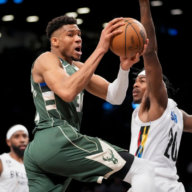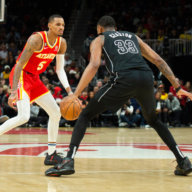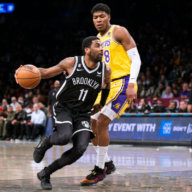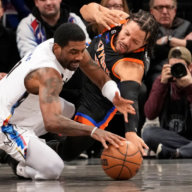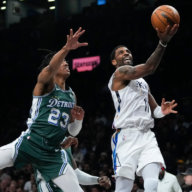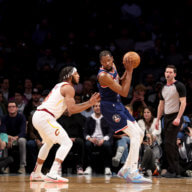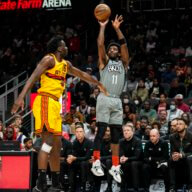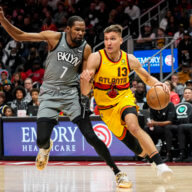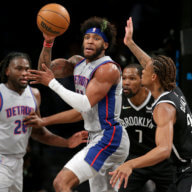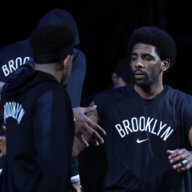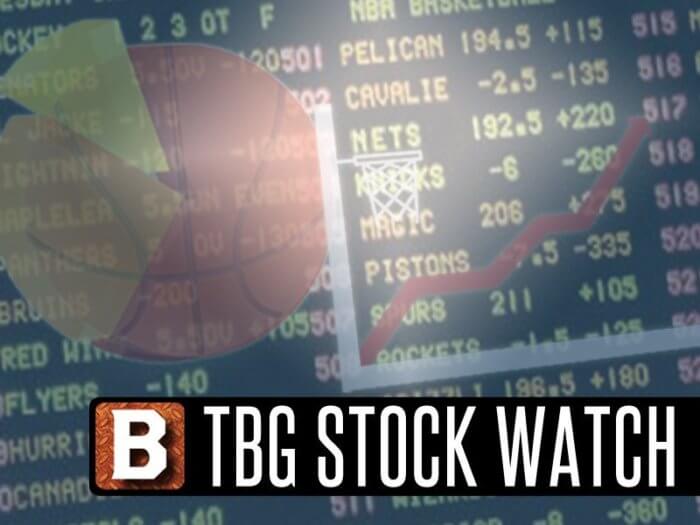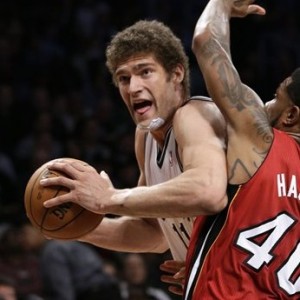This is going to be a long, and hopefully eventful off-season for the Nets, so before NAS start getting into our analysis regarding the overall direction of this franchise in terms of coaches, draft picks and free agents, I thought we’d take a look back at the performance of our roster to dissect what went wrong (unfortunately a lot) and what went right (more than you might think in my opinion).
Let’s kick our off-season awards with what should be an easy and obvious choice. As the MVP of the 2009-10 New Jersey Nets, I’m going with Brook Lopez.
Expectations were fairly high for Brook Lopez headed into this season. As one of the Nets two “cornerstones” (the other being Devin Harris at PG), and with Vince Carter traded to Orlando, it was clear from the onset of the season that Lopez was going to have to evolve into a “go-to guy” for this team, which meant his game was going to have to evolve. The fact that you can make a very good argument that Lopez exceeded those expectations with his performance, is a testament to how talented of a player Lopez is, and how his ceiling is much higher than many pundits (ahem John Hollinger) initially thought.
In terms of where he improved, let’s start with the advanced metric that measures it all, Player Efficiency Rating (PER). Lopez finished with a 20.11 PER this season, up from 17.94 in his rookie campaign, and higher than Hollinger’s projected PER of 18.82. This was good for 7th best among NBA centers (6th if you discount Greg Oden, who only played in 21 games). Only Dwight Howard, David Lee (who could be playing PF for the Nets next season), and Andrew Bogut ranked ahead of Lopez in the Eastern Conference, meaning he truly is evolving into one of the conference’s best centers not named Dwight Howard – as NAS, and others, predicted before the season started.
Yet, if you look at Lopez’s numbers across the board, his improvement is evident, albeit nuanced. His points per 40 minutes went up from 17.1 to 20.4, along with his free throw percentage and true shooting percentage. But his overall field goal percentage declines from 53 percent in his rookie year to 50 percent, and what’s somewhat alarming for a guy with his size, his rebound rate declined from a decent 15.8 to a less than stellar 13.5. The shooting issues could be explained by the kinds of shots Lopez was taking. He averaged 4.5 field goal attempts from beyond 10 feet this past season, compared with 2.5 last season. And as should be expected, his field goal percentage on these longer twos declined from 40 percent to 33 percent. What’s most unfortunate, is that many of these jumpers came in fits of frustration from Lopez, who was either getting double-teamed more often by opposing defenses in the post, or just not getting the ball from his trigger happy teammates, who despite being among the bottom in the league in field goal percentage, were 11th in the NBA in long twos (16-23 feet) attempted.
But back to the positive. While Lopez might have been hurt by not getting the ball enough from teammates, he did evolve as a better passer this season. His assist ration jumped from 7.3 to 10.7 this season, while his turnover ratio declined from 12.5 to 11.7. Ultimately, you’d like to see him turn the ball over even less, but that ratio was actually fairly decent (ranked 19th at his position).
But what actually makes Lopez the MVP of this team was that he was the clear-cut best, and most consistent player on a very bad team, and the fact that he was able to rank among the elite at his position, just shows the potential here. He led the team in points, rebounds and blocks per game, and when players were dropping like flies around him in November and December, he soldiered on, staying healthy for all 82 games this season. Get some playmakers around this guy, and watch what he becomes next season.


